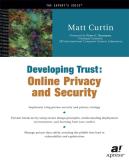Correspondence and Technology
Some people simply feel more comfortable with “just talking,” apparently lacking confidence in their ability to express themselves in written form. I am personally a firm believer in good writing and the ability of “non-writers” to write well if they will invest the effort. Short letters can help quite a bit here: not only do they take less time to compose and to edit, but they're simply less complicated. Matters of structure, flow, and transitions are simple if the letter is short and sweet instead of trying to weave together a set of disparate themes joined together by space or time. Finally, the more sittings that a letter takes to complete, the less likely that it will get finished. Simple expressions can go a long way.
Another major hurdle that many have with maintaining correspondence is the keeping of the queue—the list of messages to which the writer intends to reply. With physical letters, delivery typically takes days, or sometimes longer in the case of sending to or from a remote area of the world. Posted letters therefore have a built-in buffer that will allow correspondents some time to deal with other matters.
Email and other electronic communication is nearly instantaneous, with digital messages moving in electromagnetic packets from one side of the world to other at the speed of light. A message can be sent and a reply can be received as quickly as in face-to-face communication. The system therefore provides no built-in buffer; any queue of communication languishes in the “inbox.”
I am no Luddite: I'm a big fan of appropriately-used technology. Text processors have gone a long way to ease the editing of text. Sadly, few people take advantage of these features, thinking of a word processor simply as a text-input system. For such people, there's no serious difference between a Web form's input box and their most powerful text-editing system. (I shall reserve the discussion of text editing technology for another time.)
A failure to understand technology leads to use that ranges from what might be kindly called “suboptimal” to inappropriate. I daresay that excessive convenience in writing technology has led to its decline. What such things as word processors and email have shown us is not that people who write badly will finally start writing better. I think the real problem is that no matter how good or convenient the editing technology is, the process of editing is still manual. The writer needs to think about what he's writing, whether it's the right method of expression, whether the words chosen have just the right meaning, whether the sentences flow together, and whether the structure of the work supports its objectives.
Instead, we have made it too easy for people thoughtlessly to fire off missives. The software simply does not infer the meaning and objective of a first draft to turn it into a more eloquent message. Thus, zillions of under-edited bits of piffle circulate around the world daily.
Fundamentally what makes for good correspondence is no different in the world of email, blogs, and instant messaging than what it took when we had unreliable postal systems, paper, and quill pens: an author who cares enough to take the trouble to write well.

